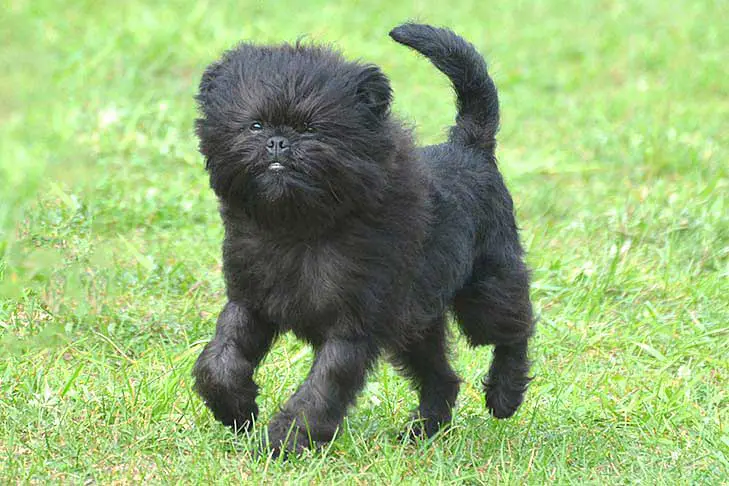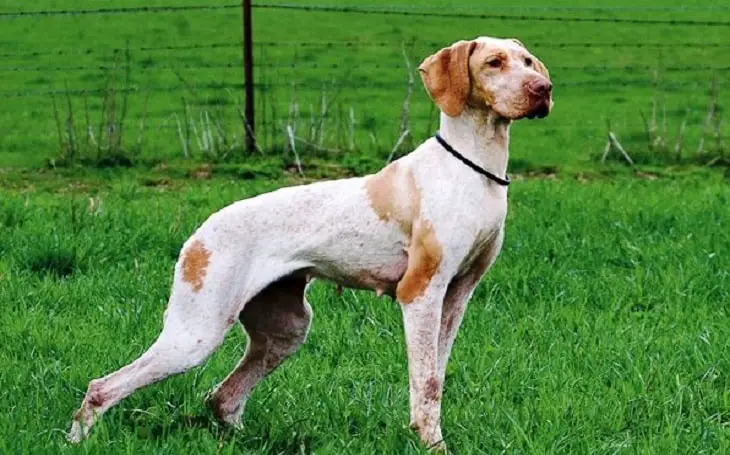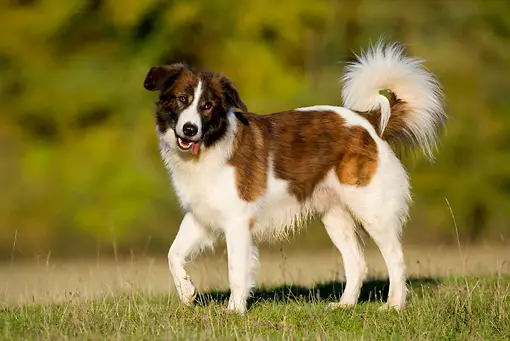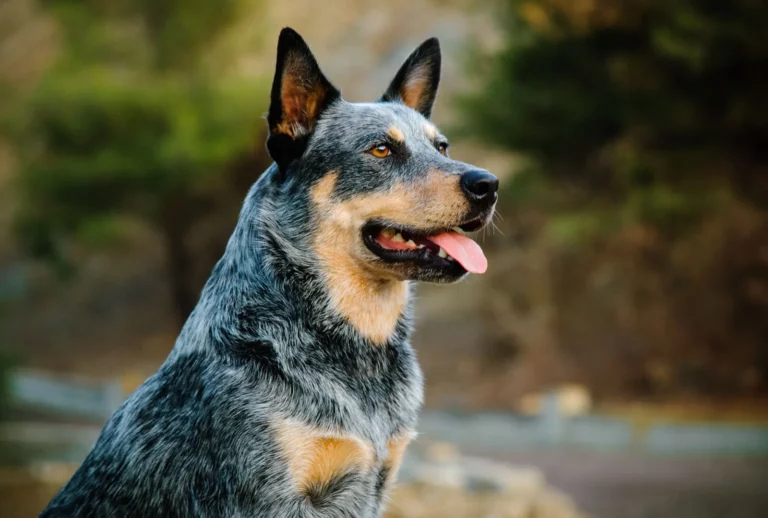The Unique and Fascinating Breeds of Dogs from Japan (6 Breeds!)
Japan is renowned for its rich culture and beautiful landscapes, but did you know that it is also home to some of the most interesting dog breeds in the world? In this blog post, we will explore six distinct breeds of dogs from Japan, their unique characteristics, and their fascinating histories.
Let’s dive into the world of these amazing canines!
Key Takeaways
1. Akita Inu: The ancient and noble breed, known for its loyalty, protective instincts, and impressive size.
2. Shiba Inu: A graceful and agile breed, popular for its bold and spirited personality, and adaptability to various living situations.
3. Kishu Ken: A rare and elegant breed with strong-willed and independent nature, in danger of becoming extinct.
4. Kai Ken: The loyal and devoted “Tiger Dog” with a unique brindle coat color and excellent hunting and tracking skills.
5. Japanese Spitz: A friendly and adaptable breed, known for its playful and affectionate nature, suitable for families and first-time dog owners.
6. Hokkaido Inu: An endangered and mystical breed with a strong prey drive and unique vocalizations, requiring efforts for preservation.
6 Breeds of Dogs from Japan
1. The Ancient and Noble Akita Inu

The Akita Inu is one of the most well-known breeds of dogs from Japan, originating from the mountainous Akita prefecture. This large and powerful breed has a rich history that dates back over a thousand years.
Originally bred for hunting large game such as bears and deer, the Akita Inu has evolved into a versatile dog with a strong protective instinct.
One of the most striking features of the Akita Inu is its beautiful and dense double coat, which comes in a variety of colors including red, white, and brindle. These dogs are known for their impressive size, standing between 24 to 28 inches tall and weighing between 70 to 130 pounds.
The Akita Inu is often described as a loyal and devoted companion, with a strong bond to their family. They are also known for their intelligence and independent nature, which can sometimes make them a challenging breed to train.
Nevertheless, with proper socialization and consistent training, these dogs can be a wonderful addition to the right household.
One of the most famous Akita Inus was Hachiko, a loyal dog who waited for his owner at the Shibuya train station in Tokyo every day for over nine years, even after his owner’s death.
Hachiko’s incredible story of loyalty has touched the hearts of people worldwide, and a statue commemorating his dedication can still be found at Shibuya station today.
If you are considering adding an Akita Inu to your family, it’s essential to be aware of their potential health issues, such as hip dysplasia, progressive retinal atrophy, and autoimmune disorders.
Regular check-ups with a veterinarian and responsible breeding can help minimize these risks and ensure a happy, healthy life for your Akita Inu.
2. The Graceful and Agile Shiba Inu
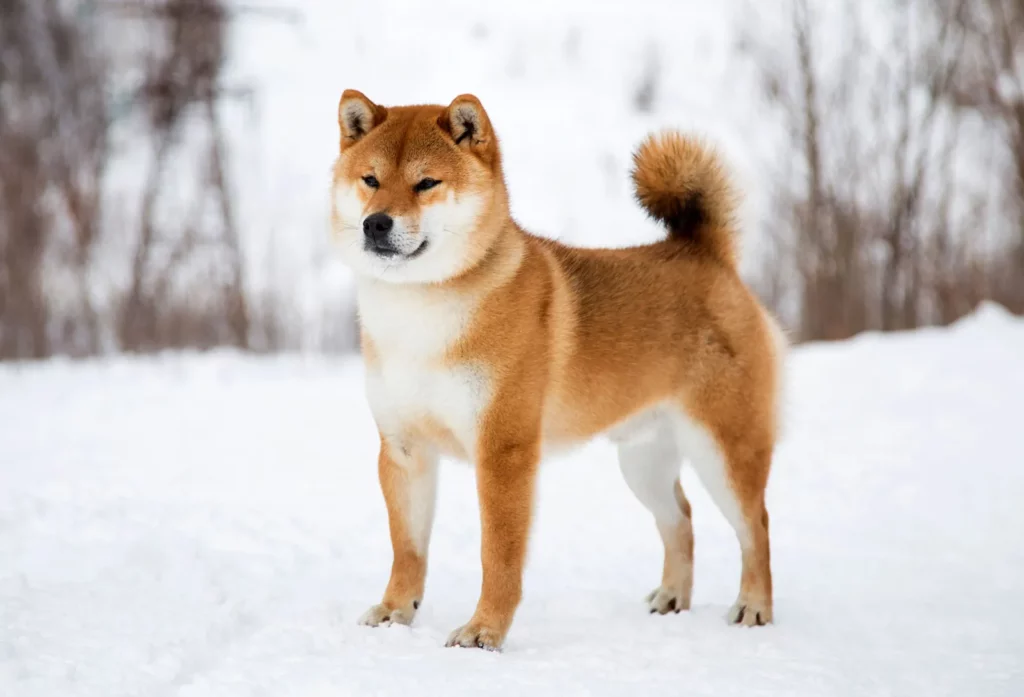
The Shiba Inu, another popular breed of dogs from Japan, is often described as a smaller and more compact version of the Akita Inu. Hailing from the mountainous regions of Japan, this ancient breed has a history dating back to 300 B.C.
Originally bred for hunting small game and flushing birds, Shiba Inus are known for their agility, endurance, and keen senses.
Standing at 13.5 to 16.5 inches tall and weighing between 17 to 23 pounds, Shiba Inus are smaller than their Akita Inu counterparts but are still muscular and well-proportioned. Their dense double coat comes in various colors, including red, sesame, and black and tan.
Shiba Inus are also known for their distinctive curled tail and small, triangular ears.
The Shiba Inu has a bold and spirited personality, making them an energetic and lively companion. They are highly intelligent and independent, which can sometimes lead to stubbornness during training. However, with patience and consistent training methods, they can become well-behaved and obedient pets.
The Shiba Inu’s popularity skyrocketed when it became the subject of the famous “Doge” meme, featuring a Shiba Inu with humorous captions written in broken English. This internet sensation has introduced the breed to millions of people worldwide, contributing to its increasing popularity as a companion dog.
When considering a Shiba Inu, potential owners should be aware of certain health issues common to the breed, such as hip dysplasia, patellar luxation, and allergies. Regular vet check-ups, responsible breeding, and a well-balanced diet can help keep your Shiba Inu healthy and happy throughout their life.
3. The Rare and Elegant Kishu Ken

The Kishu Ken, one of the lesser-known breeds of dogs from Japan, hails from the Kishu region, now known as Wakayama and Mie prefectures. This ancient breed has a history that dates back over 3,000 years and is believed to have been used for hunting deer and boar in the mountainous terrain of Japan.
Kishu Kens are medium-sized dogs, standing between 17 to 22 inches tall and weighing between 30 to 60 pounds. They have a strong, muscular build and a short, dense coat that comes in various colors, including white, red, and sesame.
Their striking appearance, characterized by their pointed ears and curled tail, is reminiscent of other Japanese breeds like the Akita Inu and Shiba Inu.
Known for their strong-willed and independent nature, Kishu Kens are versatile hunters with excellent tracking and scenting abilities. They are also highly intelligent and form strong bonds with their owners, making them loyal and devoted companions.
However, their independent nature can make training a challenge, so they are best suited for experienced dog owners who can provide consistent and firm guidance.
Unfortunately, the Kishu Ken is considered a rare breed, with declining populations both in Japan and worldwide. They are classified as a natural monument by the Japanese government, and efforts are being made to preserve and promote the breed.
If you are considering a Kishu Ken, it is essential to find a reputable breeder dedicated to maintaining the breed’s health and unique characteristics.
Potential health issues in Kishu Kens include hip dysplasia, luxating patellas, and thyroid issues. Regular veterinary check-ups, responsible breeding practices, and a well-balanced diet can help ensure your Kishu Ken stays healthy and active throughout their life.
4. The Loyal and Devoted Kai Ken

The Kai Ken, also known as the Tora Inu (Tiger Dog), is a unique breed of dogs from Japan that originated in the Yamanashi Prefecture. This medium-sized breed was initially bred for hunting game such as deer and wild boar in the mountainous terrain of Japan.
They are considered a national treasure and are protected by the Japanese government as a natural monument.
Kai Kens stand between 17 to 22 inches tall and weigh between 30 to 50 pounds. Their most distinguishing feature is their beautiful brindle coat, which comes in various shades, including black, black and tan, and red. This striking coat pattern gives them the appearance of a tiger, hence their nickname “Tiger Dog.”
The Kai Ken is known for its loyalty, devotion, and strong bond with its owners. They are highly intelligent and possess excellent hunting and tracking skills. These dogs are also known for their agility, as they are excellent climbers and swimmers.
Although they can be reserved around strangers, Kai Kens are friendly and affectionate with their family members.
Due to their intelligence and strong instincts, the Kai Ken requires consistent and positive training methods. They are best suited for experienced dog owners who can provide the necessary guidance and boundaries. Proper socialization from an early age is also crucial to help them develop into well-rounded and confident dogs.
Like other Japanese breeds, Kai Kens may be prone to certain health issues such as hip dysplasia, luxating patellas, and allergies. Regular veterinary check-ups, responsible breeding, and a balanced diet can help ensure the health and longevity of your Kai Ken.
5. The Friendly and Adaptable Japanese Spitz

The Japanese Spitz, a small and charming breed of dogs from Japan, was developed in the 1920s through the selective breeding of various Spitz-type dogs, such as the German Spitz and the Samoyed. The result is a friendly and adaptable companion dog that has become popular worldwide.
Japanese Spitzes stand between 12 to 15 inches tall and weigh between 11 to 20 pounds. They have a striking appearance, with their small, triangular ears, plumed tail, and a long, fluffy white coat that gives them a similar appearance to the larger Samoyed breed.
Their black eyes and nose provide a beautiful contrast against their pure white fur, giving them a captivating look.
The Japanese Spitz is known for its playful, intelligent, and affectionate nature, making them excellent family pets. They are good with children and can adapt well to various living situations, including apartments and larger homes. These dogs are also known for their loyalty and devotion to their owners.
Training a Japanese Spitz is relatively easy due to their high intelligence and eagerness to please. They respond well to positive reinforcement methods, and early socialization is important to help them become well-adjusted dogs. Their friendly nature and adaptability make them a suitable choice for first-time dog owners.
While generally a healthy breed, Japanese Spitzes may be prone to certain health issues such as patellar luxation, progressive retinal atrophy, and allergies. Regular veterinary check-ups, responsible breeding practices, and proper grooming can help maintain their health and ensure a long, happy life for your Japanese Spitz.
6. The Endangered and Mystical Hokkaido Inu

The Hokkaido Inu, also known as the Ainu Dog, is one of Japan’s oldest and most fascinating breeds of dogs. Hailing from the island of Hokkaido, these courageous and sturdy dogs were originally bred for hunting large game such as bears, deer, and boar.
Their strong prey drive, unique vocalizations, and incredible endurance make them a force to be reckoned with in the hunting world.
Hokkaido Inus stand between 18 to 22 inches tall and weigh between 45 to 65 pounds. Their muscular build, wedge-shaped head, and erect ears give them a striking and powerful appearance.
Their double coat, which can come in various colors such as white, red, sesame, and brindle, provides them with excellent protection against harsh weather conditions.
The Hokkaido Inu is known for its loyalty, intelligence, and strong-willed nature. They form deep bonds with their owners and are protective of their family. However, their independent streak and strong prey drive can make them a challenging breed for inexperienced dog owners.
With proper training and socialization, these dogs can become obedient and well-behaved companions.
Unfortunately, the Hokkaido Inu is considered an endangered breed, with a small and declining population. Efforts are being made in Japan and around the world to preserve and promote this unique and ancient breed.
If you are considering a Hokkaido Inu, it is essential to find a reputable breeder who prioritizes the health and preservation of the breed.
Hokkaido Inus may be prone to certain health issues such as hip dysplasia, luxating patellas, and eye conditions. Regular veterinary check-ups, responsible breeding practices, and a balanced diet can help ensure the health and well-being of your Hokkaido Inu throughout their life.
Frequently Asked Questions
How many breeds of dogs are native to Japan?
There are six main breeds of dogs native to Japan, including the Akita Inu, Shiba Inu, Kishu Ken, Kai Ken, Japanese Spitz, and Hokkaido Inu.
Are Japanese dog breeds suitable for first-time dog owners?
Some Japanese dog breeds, such as the Japanese Spitz, are suitable for first-time dog owners due to their friendly and adaptable nature. However, other breeds, like the Akita Inu and Kishu Ken, may require a more experienced owner who can handle their strong-willed and independent temperaments.
Are Japanese dog breeds hypoallergenic?
While no dog breed is entirely hypoallergenic, the Japanese Spitz is considered to be a low-shedding breed and may be more suitable for people with allergies.
Which Japanese dog breed is the rarest?
The Kishu Ken and Hokkaido Inu are the rarest Japanese dog breeds. Both breeds have low populations and are at risk of becoming extinct.
How can I help preserve the rare breeds of dogs from Japan?
To help preserve these rare breeds, you can support breed-specific rescue organizations, educate others about these unique dogs, and consider adopting or purchasing from reputable breeders who prioritize breed preservation and health.
Final Thoughts
Japan has a rich history of unique and fascinating dog breeds, each with their distinct characteristics, temperament, and appearance.
From the loyal and protective Akita Inu to the friendly and adaptable Japanese Spitz, these breeds have made their mark on the hearts of dog lovers worldwide.
As you explore the incredible world of breeds of dogs from Japan, it’s essential to consider their unique needs, temperament, and health concerns to ensure a happy and fulfilling life for both you and your canine companion.
By understanding and appreciating these remarkable breeds, we can help preserve their legacy for future generations to enjoy.

